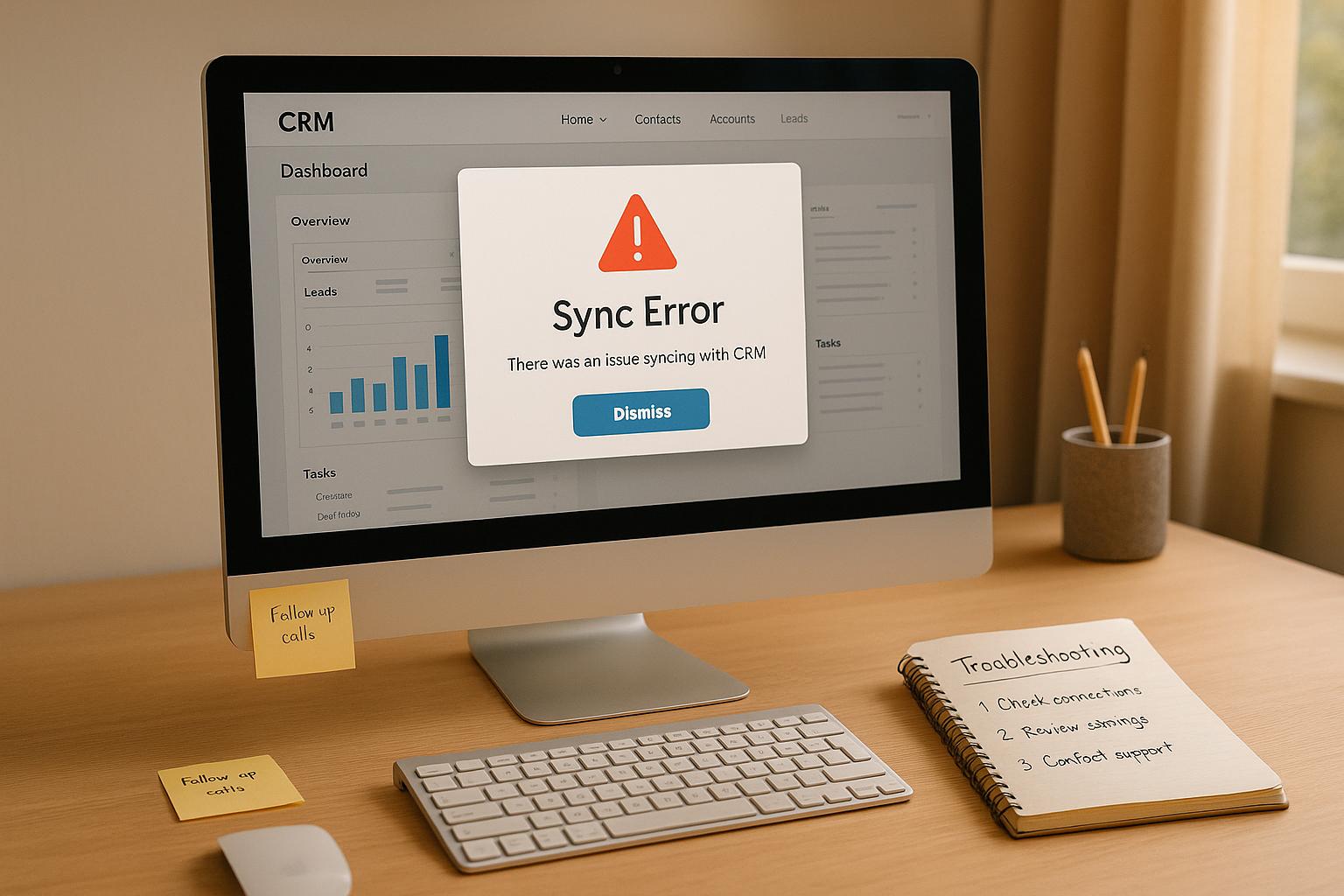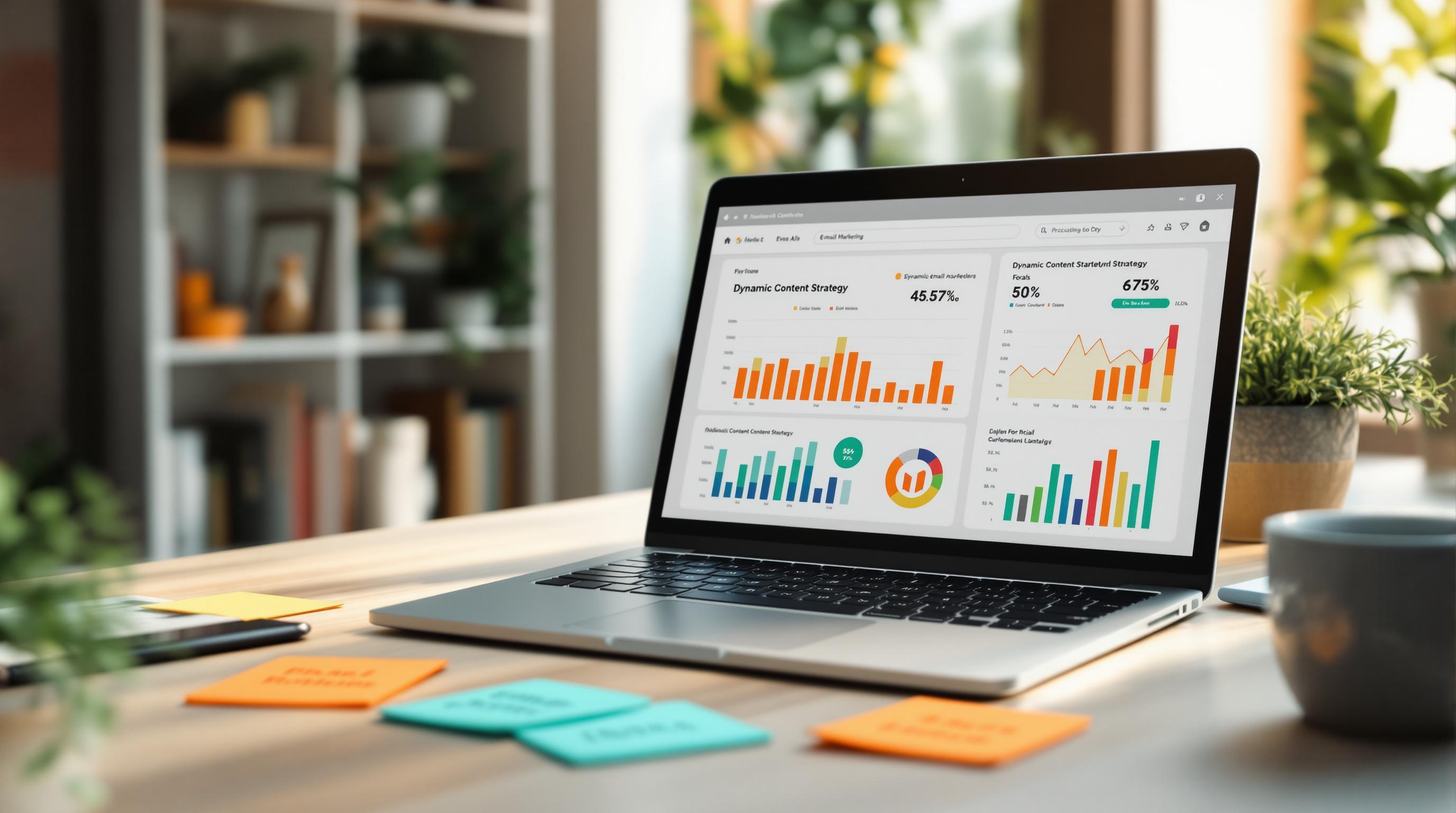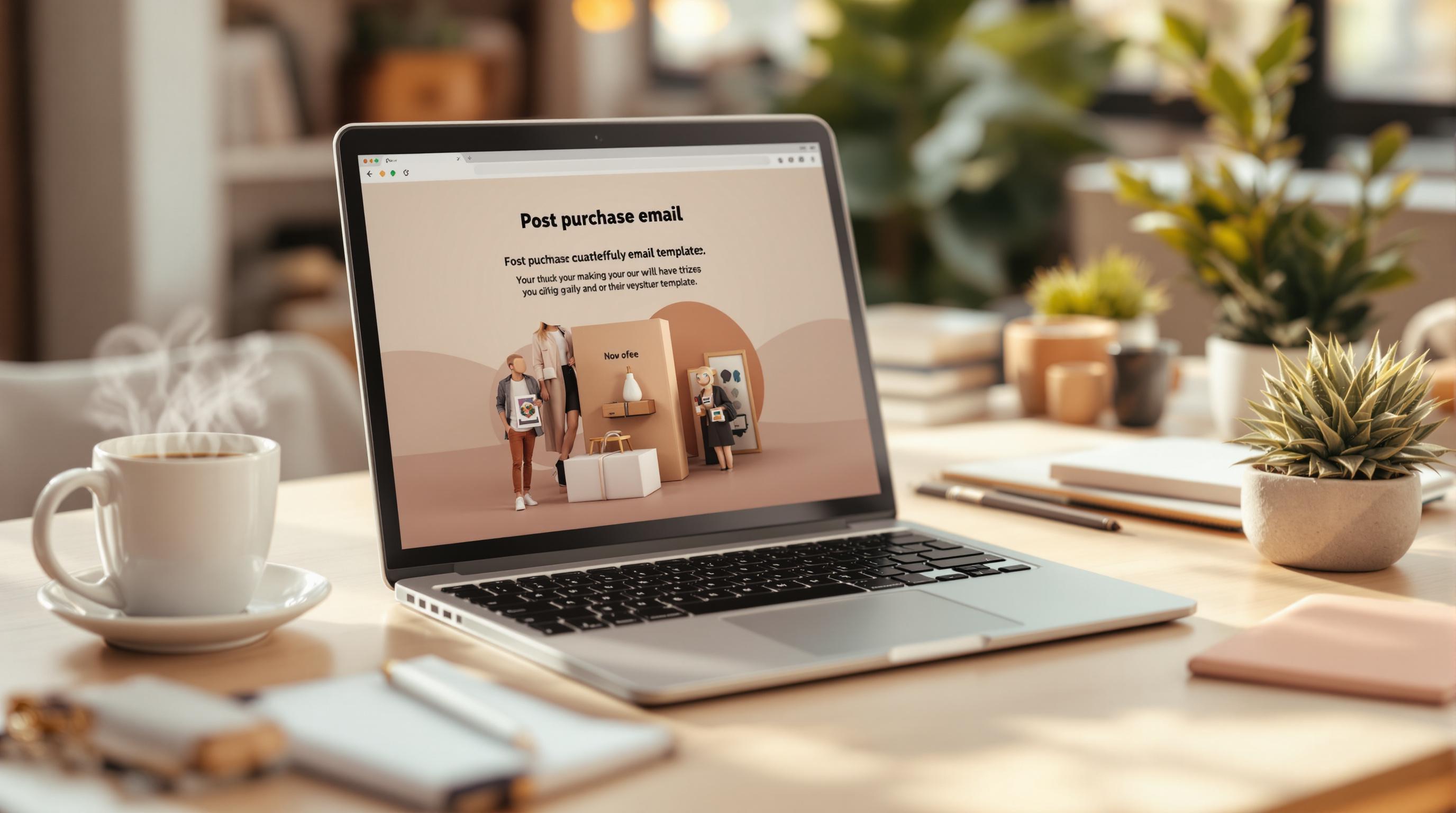Want to stop customers from leaving? Email campaigns are one of the most effective tools to reduce churn and keep users engaged. Here’s a quick breakdown of 7 proven email strategies that successful companies use to retain customers:
- Personalized Emails: Tailor messages based on customer behavior or preferences (e.g., Netflix recommendations, Spotify Wrapped).
- Onboarding Emails: Help new users get started quickly with how-to guides and tips (e.g., Slack's simple welcome emails).
- Check-In Emails: Stay connected through product updates, newsletters, or community events (e.g., Grammarly's weekly reports).
- Feedback Surveys: Collect insights with post-purchase, service, or cancellation surveys (e.g., Amazon's quick feedback forms).
- Re-Engagement Emails: Win back inactive users with updates, testimonials, or special offers (e.g., Duolingo's streak reminders).
- Follow-Up Emails: Use automation to send reminders or renewal notices at the right time (e.g., Netflix's renewal check-ins).
- Retention Emails: Prevent cancellations with personalized offers, progress highlights, or problem-solving updates (e.g., Adobe's targeted discounts).
These strategies are backed by real-world examples and data, like HubSpot cutting churn by 2% or Duolingo increasing retention by 15%. Whether you’re welcoming new users or re-engaging quiet ones, these tactics can help you build stronger customer relationships and reduce churn effectively.
Related video from YouTube
1. Emails Tailored to the Customer
Want to keep your customers coming back? Smart email campaigns might be your secret weapon. Let's look at how personalized emails can help you connect with customers and keep them around longer.
Why Grouping Customers Matters
Think of customer grouping like organizing your closet - everything has its place. By sorting customers based on how they behave, who they are, and what they buy, you can send messages that actually matter to them.
Take Amazon, for example. They boost their sales by sending product suggestions based on what you've browsed and bought. A 2023 study showed that emails with personalized product picks can bring in 20-30% more money than generic "one-size-fits-all" emails.
Real-Life Examples of Personalization
Let's look at how some big names use smart email strategies to keep customers happy:
Netflix knows what you like to watch and uses this info to suggest new shows you might enjoy. It's like having a friend who knows your taste in TV.
Spotify hit it big with their "Wrapped" campaign. By turning listening habits into personal music stories, they got over 120 million users excited about their service in 2022.
Headspace, the meditation app, doesn't give up on quiet users. They send friendly check-ins with progress updates and special offers to bring people back. Smart move - they saw 15% better user retention in 2021 after starting these personalized nudges.
Want to try these ideas yourself? Check out the Email Service Business Directory for tools that can help you group customers and send the right message at the right time.
2. Onboarding and How-To Emails
Want to keep your new users around longer? It all starts with smart onboarding emails. These emails help users get real value from your product right away, making them more likely to stick around.
What Makes Onboarding Emails Work
The key to great onboarding emails? Sending the right message at the right time. Here's what works:
When Slack welcomes new users, they keep it simple: a friendly hello plus quick tips to get started. This approach isn't just nice - it boosted their team activation rates by 30% in 2022.
But it's not just about saying hello. Duolingo nailed it with their step-by-step guidance emails, bumping up user retention by 50% in 2023. And when Competitive Cyclist added how-to videos to their emails, they cut down support questions by 25% in 2021.
"Long-term customer retention comes from great onboarding. Those initial experiences with the brand, often driven by email, have a major impact on what that relationship looks like in the long term" .
Examples of Helpful Educational Content
Smart companies don't just tell - they teach. Take Asana's 'Goals' campaign from 2023. Their detailed guide got 15% more users trying out the feature in just one month.
HubSpot takes a different approach. They mix real success stories into their onboarding emails, showing exactly how other businesses win with their tools. It's like saying, "Hey, here's what's possible!"
Canva tackled common hurdles head-on by adding a "Getting Started FAQ" to their welcome series. Smart move - they saw 20% fewer basic support tickets in 2022. The FAQ covers everything from downloading designs to team collaboration, helping users solve problems before they even ask.
3. Regular Check-In Emails
Want to keep customers coming back? Regular check-in emails do more than just say "hello" - they build real connections and keep your brand fresh in customers' minds.
Here's what works in practice:
Product Updates Take Asana's 2023 emails about their "Workflow Builder" feature. By showing clear visuals and simple how-tos, they boosted feature usage by 25% in just two months.
Events That Build Community HubSpot's "Inbound Insider" webinar series pulled in over 10,000 people in 2022. Why? These events made customers feel like part of something bigger while teaching them useful skills.
Smart Newsletters Look at Spotify's "Your Monthly Mixtape" - it's not just another email. It gets people exploring more music and spending more time on the platform.
Making Every Email Count
The best check-in emails teach customers something new or help them do their jobs better.
Grammarly nails this with their weekly reports. They show users how their writing's improving and drop in personal tips. Smart move - it pushed user activity up 40% in 2023.
Mailchimp takes a different route. Their yearly "Email Marketing Benchmarks" report gives users real data on open rates and click-throughs. It helps people measure how they're doing and fix what's not working.
Blue Apron keeps things practical. Their emails pack in cooking tips and recipe ideas - exactly what their food-loving customers want. In a market where everyone's fighting for attention, these helpful hints keep people coming back.
Think of these emails as friendly check-ins that actually help your customers. They set you up perfectly for getting honest feedback later on.
4. Feedback and Survey Emails
Want to cut down on customer churn? Start by asking your customers what they think. When you reach out for feedback, you're not just collecting data - you're showing customers their opinions matter. Plus, you'll spot problems before they turn into deal-breakers.
Different Feedback Email Types
Here are three email types that help keep customers around:
Post-Purchase Surveys: Send these right after someone buys from you. Amazon does this well - they ask buyers about their shopping experience and what they think about their purchase. It works too: A 2023 XYZ Retail study found these surveys boosted repeat purchases by 15%.
Service Satisfaction Forms: These come after customer support interactions. Take Zendesk - they use these forms to check how well their support team is doing. In 2023, this approach helped them hit a 92% customer satisfaction rate by helping them fine-tune their training and speed up responses.
Cancellation Feedback: When customers leave, find out why. Netflix nails this - they ask departing customers simple questions about their reasons (price? content? technical stuff?). This led them to add more shows and cheaper plans, cutting their customer losses by 15% in 2022.
Turning Feedback into Action
Getting feedback is just step one. Here's how to put it to work:
Look for patterns in what customers tell you. Shopify did this in 2023 when lots of people said their checkout was too complicated. They cleaned it up, and boom - 20% more people completed their purchases.
Make specific fixes based on what you hear. When Zappos got complaints about slow shipping, they revamped their delivery system. Result? Deliveries got 30% faster, and 12% more customers stuck around in 2022.
Tell customers what you've done with their feedback. Slack does this really well. When users asked for better notification controls, Slack added them in 2023 and sent emails saying "Hey, remember that thing you wanted? We built it!" Their daily users jumped up 18%.
"To reduce churn, it's important to provide exceptional customer service and promptly address any issues or concerns." – Lindsey Arellano, Director of Email and SMS at CURIO
After you've got your feedback system running smoothly, it's time to focus on bringing back customers who've gone quiet.
sbb-itb-6e7333f
5. Re-Engagement Emails
Re-engagement emails help you win back customers who've gone quiet or might be thinking about leaving. These emails remind them why they picked you in the first place and try to spark their interest before they drift away completely.
How to Create Effective Win-Back Emails
Want to get those inactive customers excited about your product again? Here's what works:
Show Off What's New: Tell them about cool updates they've missed. Asana does this really well - they ping users who haven't logged in for a while about new stuff like timeline views or fresh integrations. It's perfect for folks who left because they thought the product couldn't do what they needed.
Let Others Do the Talking: Nothing beats hearing from happy customers. Klaviyo smartly picks out reviews that match what each inactive user cared about, making their messages feel personal and real.
Give Them a Sweet Deal: A good discount with a deadline can light a fire under people. Girlfriend Collective keeps it simple with clean emails showing special offers that won't last forever.
Examples of Re-Engagement Campaigns
Check out how these companies bring their quiet customers back:
Blue Apron sends "come back" deals that make you want to act fast - they know how to mix "don't miss out" with "here's something special for you."
Duolingo reminds people about the good stuff sitting in their account, like streak freezes they haven't used or premium features about to expire. Nobody likes to waste something they already have!
Spotify gets personal - they'll hit you with custom playlists like 'Your Summer Rewind,' showing you exactly what you're missing out on.
After you've gotten people back, keep them around with emails that show up at just the right time.
6. Follow-Up Emails at the Right Time
Smart timing of follow-up emails helps keep customers engaged and solve problems before they lead to cancellations. The right message at the right moment can make all the difference - whether you're reminding someone about their renewal or helping them finish their purchase.
Using Automation for Perfect Timing
Email automation takes the guesswork out of when to reach out to customers. Here's what works:
- Smart Triggers: Tools like Klaviyo and Mailchimp send emails automatically when customers take specific actions, like signing up for a trial or leaving items in their cart.
- Personal Touch: Mix automation with customer behavior data to send follow-ups that matter to each person - like showing them how much they've used your product before renewal time.
- Fine-Tuning: Testing different subject lines, send times, and email formats isn't just guesswork - HubSpot found it can cut customer losses by 2% .
Common Types of Follow-Up Emails
Trial Expiration Emails HubSpot nails this with a series of emails before a trial ends. They show users exactly what they'll miss out on and sometimes throw in a special offer to seal the deal.
Renewal Check-ins Netflix does this well - they remind you about upcoming charges while showing how much you've watched, making you think "Yeah, I get my money's worth."
Cart Recovery Amazon's approach here is spot-on. They don't just remind you about what's in your cart - they show you similar items you might like based on what you've been looking at.
After-Purchase Care Apple's post-purchase emails hit the right note: a simple thank you plus helpful links to product guides and support. It's like having a friendly expert in your inbox.
Need help picking the right email tools? Check out the Email Service Business Directory to find platforms that fit your needs.
7. Retention Emails to Prevent Cancellations
Want to keep customers from hitting that cancel button? Smart retention emails can make all the difference. Here's how top companies use emails to keep their customers engaged and happy.
Key Features of Retention-Focused Emails
Exit Surveys That Drive Action Spotify doesn't just let users walk away - they ask why. Their cancellation flow includes a quick survey that helps them craft targeted follow-up emails. By understanding exactly why customers leave, they can offer specific solutions that address real concerns.
Smart Offers That Hit Home Adobe Creative Cloud knows how to make customers think twice about leaving. They study user behavior and send personalized discount offers to those about to cancel. The numbers speak for themselves - they've cut customer losses by 15% in just one year.
Progress Highlights That Hook Users Duolingo plays it smart by showing users what they'd leave behind. When someone's thinking of quitting, they get an email showcasing their language-learning journey and achievements. It's like saying, "Look how far you've come - are you sure you want to stop now?"
Examples of Retention Emails That Work
Simple Yet Powerful Win-Back Messages Girlfriend Collective proves that less can be more. Their win-back emails keep it clean and straightforward: "20% off if you stay with us today." No fancy tricks - just a clear offer with a dash of urgency that gets results.
Updates That Solve Real Problems Asana knows timing is everything. When they rolled out their timeline feature in 2022, they didn't blast everyone - they targeted users who'd complained about project tracking issues. Smart move? You bet. They saw 12% of inactive users jump back in.
Rewards That Keep Giving Starbucks turns their Rewards program into a customer magnet. Their retention emails highlight the good stuff - free drinks, first dibs on new products, and bonus stars. It's not just about points - it's about making customers feel like VIPs who'd miss out by leaving.
Conclusion
Email marketing helps you keep customers around longer and build stronger relationships with them. Let's look at what works based on real examples from successful companies.
Take Competitive Cyclist - their welcome emails walk new customers through everything step by step, helping people get started right away. Or look at Asana: when they reached out to inactive users with updates about new features, 12% of those users came back.
The right timing makes a big difference too. Adobe Creative Cloud saw this firsthand - they cut cancellations by 15% in just one year by sending personalized discount offers to customers right before they might leave.
Here are the seven email approaches that make the biggest impact:
- Welcome emails that help customers get started
- How-to guides that show what's possible
- Regular updates to keep people in the loop
- Feedback requests to show you're listening
- Win-back messages for inactive customers
- Quick follow-ups at key moments
- Special offers to reward loyalty
As Val Geisler from ByHeart puts it:
"Long-term customer retention comes from great onboarding."
Want to put these ideas to work? Check out the Email Service Business Directory to find tools that can help you send the right emails at the right time. These platforms can handle everything from welcome series to win-back campaigns, with features like automation and customer data tracking to make your job easier.
FAQs
How do you write an email to retain customers?
Want to keep your customers coming back? Let's look at what makes retention emails work.
Here's what the data tells us: 71% of customers want personalized marketing messages. But there's more to it than just using someone's name.
Take Spotify's yearly "Wrapped" campaign. By turning each user's listening data into a personal story, they've created an email campaign that gets millions of shares every December.
Here's what makes retention emails click:
- Make it personal: Go beyond "Dear [Name]." Blue Apron nails this with their "We miss you!" emails, adding a sweet discount to bring people back.
- Grab attention fast: Your subject line is your first impression. Keep it short and clear about what's in it for them.
- Tell them what to do: Every email needs a clear next step. HubSpot's product update emails with their "Explore New Features" button helped cut customer drop-off by 2%.
- Stay true to your voice: Look at Girlfriend Collective - their emails match their brand perfectly, mixing their earth-friendly message with limited-time offers.
Smart moves that work:
Split your email list based on how people use your product. Asana does this well - they watch for inactive users and send them custom updates about new features. This trick helped them bring back 12% of users who'd stopped using the platform.
Show people how to get more from your product. Adobe Creative Cloud sends new users step-by-step video guides, which helped them keep 15% more customers over a year.
Time your emails right. Send them when they matter most - like just before a renewal date or when someone hasn't logged in for a while.
Want to step up your email game? Check out the Email Service Business Directory for tools that can help you put these ideas into action.


